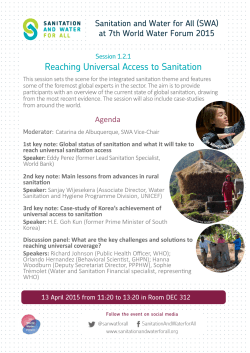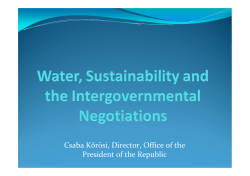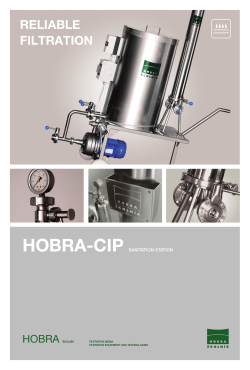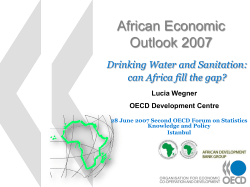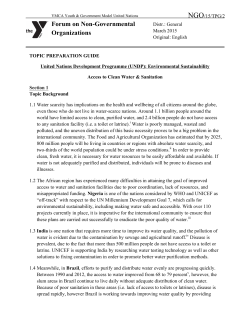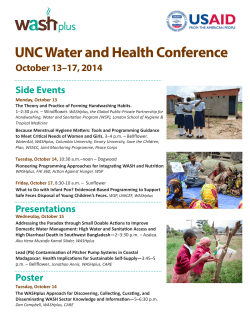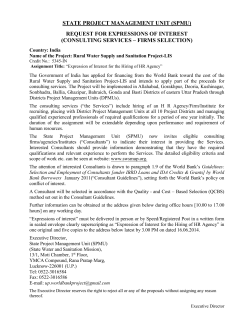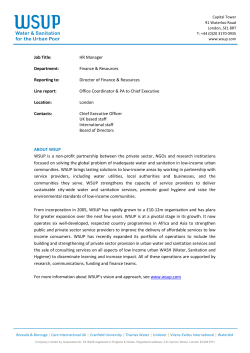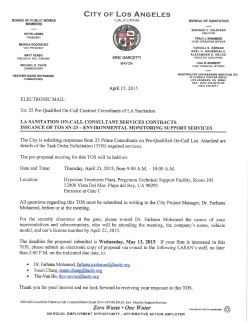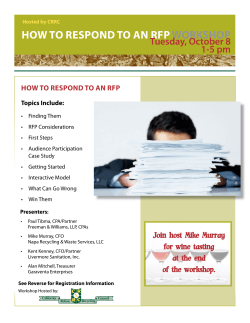
BOOK REVIEW: URBAN SANITATION t men
Alpopi C. BOOK REVIEW: URBAN SANITATION by CRISTINA IACOBOAEA BOOK REVIEW: URBAN SANITATION Cristina ALPOPI Academy of Economic Studies, Calea Serban Vodă 22-24, Bucharest, Romania oana_maty@yahoo.com Volume 9 Issue 4 / November 2014 Theoretical and Empirical Researches in Urban Management by Cristina IACOBOAEA The book "Urban Sanitation" was published in 2013 by Conspress Bucharest. The author Dr. Cristina Iacoboaea, lecturer at the Technical University of Civil Engineering of Bucharest, structures the material in 10 chapters over 181 pages, in which she analyses, in a clear and comprehensive manner, waste management issues ‒ treating issues such as waste collection and transport, recycling, biological treatment and thermal storage. The author presents, at the same time, elements of legislation, focusing mainly on municipal and household waste. In Chapter 1, “Introduction”, is highlighted the importance of sanitation in urban areas and the factors which affect sanitation. In this chapter is also discussed the historical evolution of urban sanitation activities, from the Roman Empire until the present day. In Chapter 2, „Waste. Definitions. Features”, the notion of waste is defined and waste is classified according to the sources of waste, its composition, the main characteristics of the various treatment possibilities, the impact on human health, and on the environment. Municipal waste is also described in terms of its composition and quantity as they were generated during 1995-2010 in Romania and the European Union (EU 27). In Chapter 3, „Waste Management”, the author presents the principles of formulating measures to prevent waste generation and waste reduction, concluding at the end of the chapter with the concept of "Zero waste". nt 65 Alpopi C. BOOK REVIEW: URBAN SANITATION by CRISTINA IACOBOAEA In Chapter 4, „The Collection and Transportation of Municipal Waste” are discussed, distinguishing between traditional and alternative systems of municipal waste collection and disposal service provided to localities in Romania. In Chapter 5, „Recycling of Municipal Waste”, there is a discussion of the opportunities for waste countries. Chapter 6, „Biological Treatment”, shows how these procedures have been used over time in the EU. The situation in Romania is also presented. There is also a discussion of the main types of biological treatment procedures. In Chapter 7, „Thermal Waste Treatment Methods”, there is a discussion of the most important methods for thermal treatment of waste and how they are used in EU countries and in Romania. In Chapter 8, „Landfilling”, the author highlights the negative effects of waste disposal on the environment and presents the time evolution of the storage process from simple processes to the more sophisticated bioreactor control. She also discusses recent attempts to pollute the environment as little as possible and to protect human health. Chapter 9, „Waste Management in Romania – Legislation”, points out that, although Romania has had a very limited of time to adapt the legislative framework for waste management in the European legislation, many European directives have been implemented in Romanian legislation. In Chapter 10, „Construction and Demolition Waste”, is discussed waste from construction, renovation, rehabilitation, repair, building, demolition, civil engineering, industry and so on. Highlighted are major differences in construction waste generated in the different EU countries. This is due to differences between building technologies used in the various countries, the traditions about the construction and materials used in the construction sector economic activity, and so on. In conclusion, this book shows how urban sanitation has evolved from simple collecting and disposal to Volume 9 Issue 4 / November 2014 waste and describing the various methods of treating the municipal waste that is generated in EU Theoretical and Empirical Researches in Urban Management recycling, pointing out to the magnitudes of the possible extraction of useful materials from municipal more sophisticated forms. Through the problems treated in this book the author has shown that local authorities and counties have an increased responsibility in preventing waste and in disposing of it. There is obviously also a continuing concern at the European level concerning waste management. The book will be found useful to representatives of public administration, people involved in waste management, policy makers and scientists. nt 66
© Copyright 2025

